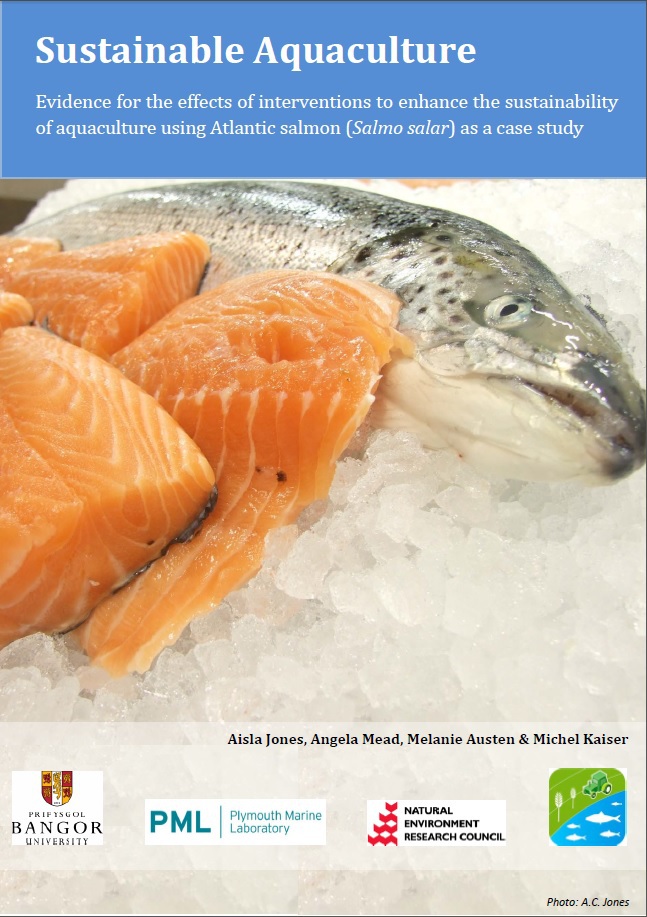Integrated aquaculture systems
-
Overall effectiveness category Awaiting assessment
-
Number of studies: 4
View assessment score
Hide assessment score
How is the evidence assessed?
-
Effectiveness
not assessed -
Certainty
not assessed -
Harms
not assessed
Study locations
Supporting evidence from individual studies
Between 1994 and 1996, a replicated, controlled study at two sites in Maine, USA (Parsons et al., 2002) found that shell height and survival of sea scallops, Placopecten magellanicus was greater on drop lines adjacent to salmon cages compared to benthic cages. Percentage survival of the scallops held for one and a half years in the pearl nets (72.7% and 63.9%) was higher than that of those in benthic cages (28% and 32.0%) at both sites and was the case for each sampling date. Mean shell height in the pearl nets (73.0 mm and 69.0 mm) was also higher than that of those in benthic cages (68.5 mm and 52.0 mm) after one and a half years. Pearl nets comprised of drop lines containing ten nets at 3m depth were deployed 4m away from salmon cages at two sites and sampled every four months for eighteen months. Benthic cages of modified lobster traps were deployed 100m away from salmon cages at depth of 10 and 15m at each site. The authors note that growth rates recorded in this trial are comparable with those of scallops grown away from salmon farms.
Study and other actions testedA study in the surroundings of a marine fish farm located in Águilas, SE Spain in 2008 (Navarrete-Mier et al., 2010) found evidence to indicate that oysters and mussels were not feeding on waste from fish farms when grown in polyculture systems. Between the beginning and end of the 90 day trial, oysters and mussels showed an increase in shell length of 85±54 mm and 152±45 mm, respectively. Analysis of stable isotopes content from the bivalves indicated no relationship between the trophic behaviour of the bivalves and the main input of organic matter from the fish farm (the feed). Growth of the bivalves was not affected by proximity to the fish farm. Oyster (Ostrea edulis) and mussel (Mytilus galloprovincialis) were deployed along a distance transect running from 0 to 1800 m from fish cages containing cultured gilthead sea bream (Sparus aurata) and European sea bass (Dicentrarchus labrax) for 3 months. The bivalves were placed at 15 m depth at 0, 25, 120, 300, 600 and 1800 m from the net cages to assess whether the fish farm influenced their development.
Study and other actions testedLaboratory and field trial in Canada in 2005 (Reid et al., 2010) found that organic material in waste from salmon culture can be absorbed by blue mussels (Mytilus edulis and M. trossulus). The absorption efficiencies for the spat formula feed, diatom based salmon feed, salmon faeces (laboratory trial) and total particulate matter at salmon cages were 87, 81, 90, 86, and 54% respectively. In the laboratory experiments, four diets were fed to three size classes of mussels; spat formula diet, diatom based formula diet, salmon feed and salmon faeces over a period of one and a half months. In the field trials, mussels were placed individually in chambers on a moored boat and the outflowfrom the salmon farm was used to measure total particulate matter, total organic matter and organic carbon with collection occurring prior to, and mid-way through each 1.5 h trial. The trials occurred on three separate days. Faecal deposits were collected throughout the trial to determine absorption efficiency.
Study and other actions testedBetween 2004 and 2005, a replicated, controlled trial in Scotland between 2004 and 2005 (Sanderson et al., 2012) found that growth of two algae species, Palmaria palmata and Saccharina latissima was enhanced when grown close to fish farm cages. Algae grown on frames adjacent to fish farms had 63% and 27% greater fresh weight biomass compared to algae grown on frames away from fish farms for P.palmata and S.latissima respectively. A similar pattern was observed for algae grown on longlines.
Nitrogen content of the algae grown at reference sites away from the cages was lower than those grown close to the fish cages (Percentage nitrogen in: farm frames- 4.6 and 1.90%, reference frames- 2.3 and 1.23%, farm longlines- 2.7 and 1.65% and reference longlines- 2.0 and 1.29% for P.palmata and S.latissima respectively).
Algae were grown at three sites adjacent to fish farm cages and at seven other sites distant from fish farm cages. Attached to three buoyed frames at each site were stings with P. palmata at 1–1.8 m depth and ropes with S. latissima at 1.8–2.6 m depth. In addition, three longlines were put in place, two at reference sites away from the cages and one running perpendicular to a group of cages. Seeded string of 2 to 6 m lengths of P.palmata was deployed three times throughout the experiment. Three groups of five droppers were attached to each longline. Droppers of S. latissima consisted of 7 m lengths of 10mm three-strand polypropylene rope with 10 cm lengths of seeded string inserted into the lay of the rope at depths of 1, 2, 3, 4 and 5 m.
Study and other actions tested
Where has this evidence come from?
List of journals searched by synopsis
All the journals searched for all synopses
This Action forms part of the Action Synopsis:
Sustainable Aquaculture
Sustainable Aquaculture - Published 2013
Atlantic salmon Aquaculture Synopsis





)_2023.JPG)














